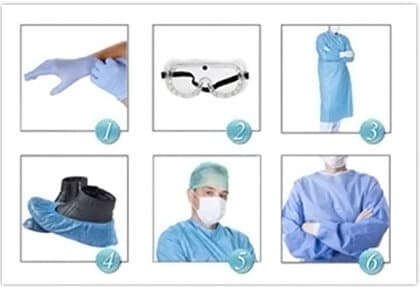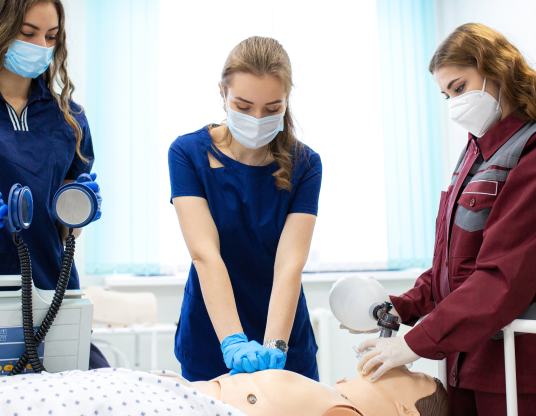Chapter 2: Assessing The Situation
When an emergency happens, your first move shouldn’t be hands-on—it should be eyes open. Scan your surroundings. Take a second to check the scene and make sure it’s safe before stepping in.
If something feels unsafe, don’t risk it. You can’t help anyone if you become a second victim.
- COVID-19 Reminder
If you suspect the person may have COVID-19—or you’re in a setting with known exposure—follow the 2021 interim guidance:
- Put on PPE right away
- Limit how many people get close
- Only approach after confirming the scene is safe
- Call 9-1-1 Immediately
No matter how urgent the situation looks, calling 9-1-1 should be one of the first things you do. Getting help on the way early gives the person their best shot at survival.

- Protect Yourself While Helping Others
If you have access to personal protective equipment (PPE), use it. This gear is your barrier against bloodborne pathogens and other risks. Here’s what PPE might include:
- Gloves
- Eye protection (goggles or face shield)
- Gown or apron
- Face mask or shield
- Shoe covers
- Cap or hair cover
- A breathing barrier (if available)
If you don’t have PPE, and there’s clear exposure risk, step back and wait for EMS.
- Be Cautious with Injuries
If you think the person has hurt their neck or spine, don’t move them—especially not by shaking or turning their body. Wait for trained responders unless staying still puts them in more danger.
- The Chain of Survival
When it’s time to start CPR, remember the Chain of Survival from the Emergency Cardiovascular Care (ECC) guidelines. These five steps are your blueprint for saving a life:
- Recognize the emergency and activate EMS
- Start CPR quickly, focusing on compressions
- Use an AED as soon as possible
- Provide advanced care when help arrives
- Continue with organized post-care to support recovery
Each link in this chain plays a vital role in saving a life.
This chapter is part of your Online Healthcare Provider CPR Course and gives you the tools to step into an emergency with clarity, safety, and confidence.



